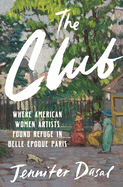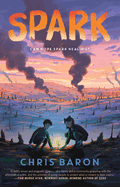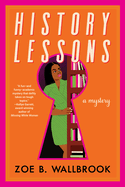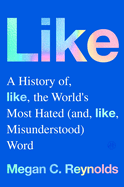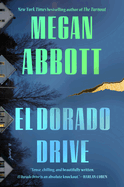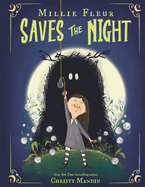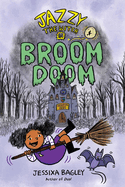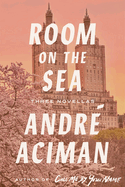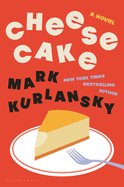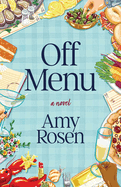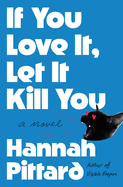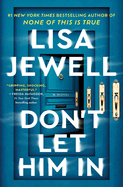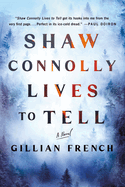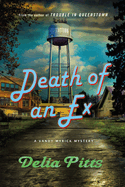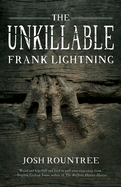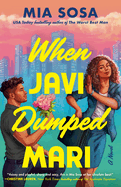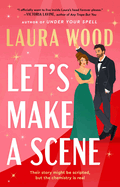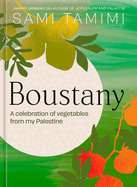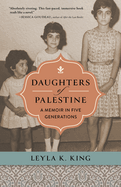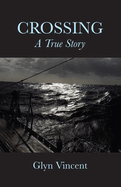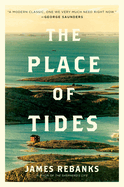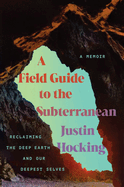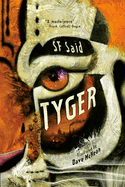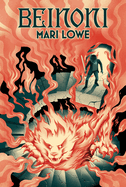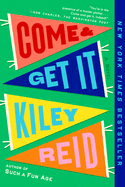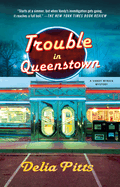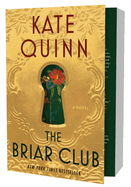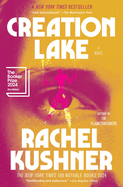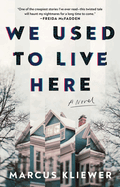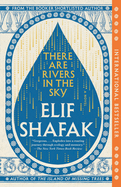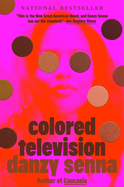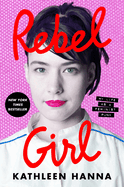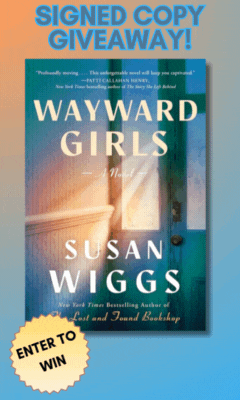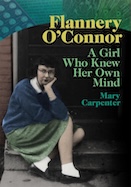Week of Friday, July 18, 2025
How about a bit of history this week? Jennifer Dasal's The Club: Where American Women Artists Found Refuge in Belle Époque Paris is "like being slipped the password to a speakeasy" with its consideration of creative derring-do, supportive community, and countercultural mores. Megan C. Reynolds's Like: A History of the World's Most Hated (and Misunderstood) Word delves into the "cathartic, enjoyable, and accessible" saga surrounding a common linguistic flourish. And Zoe B. Wallbrook's debut novel, History Lessons, transforms a junior professor of French colonial history into witty sleuth after a suspicious death on campus. Read on for these and so much more!
Room on the Sea
by André Aciman
Among the themes that recur in the splendid works of André Aciman (Enigma Variations; Find Me) is the belief that love is possible anywhere, and one should embrace it wherever one finds it. That's never been more evident than in the trio of unapologetically romantic novellas that constitute Room on the Sea. Another staple of Aciman's work is Italy, most famously in Call Me by Your Name. Such is the case again here, starting with "The Gentleman from Peru," in which eight young Americans staying at a hotel in southern Italy meet a 60-ish man who has the ability to heal people by laying a hand upon them. More mysteriously, he has a remarkable connection to one of the young women, of whom he claims to know "many things."
He sure does, and the revelation couldn't be more beautiful. Further delicate beauty infuses the titular work, in which a male lawyer and female therapist in their 60s, both married to others, meet during jury duty in New York and discover a mutual passion for Italy, and much else. The closing piece, "Mariana," is a jilted woman's lament, a letter to the man she met at a retreat in Italy. She's still smarting, she writes, from "the speed with which you flipped off the switch on me." Aciman is his usual urbane self throughout, discoursing on love's vicissitudes. "Sometimes striving is all we have," the therapist states. The perpetual striving for human contact assumes achingly definable features in this accessibly philosophical work. --Michael Magras, freelance book reviewer
Discover: Room on the Sea by André Aciman is a trio of elegant novellas in which characters pine for love and strive to make human connections, all set against the backdrop of a passion for Italy.
Cheesecake
by Mark Kurlansky
Mark Kurlansky, perhaps best known for his impeccably researched nonfiction (Salt, Cod, and The Last Fish Tale), humorously and accurately chronicles the dramatic changes in Manhattan's Upper West Side during the 1980s in his sixth work of fiction, Cheesecake.
This vibrant, funny, and at times bittersweet story unfolds primarily through the eyes of the Katsikas family, who arrive in New York from a "small rock-bound Greek island." Two brothers--Art (born Achilles) and Niki (né Nikodemos)--and Niki's wife, Adara, open (what else?) a Greek diner on the corner of 86th Street and Columbus, and call it Katz Brothers. Art is the wheeler-dealer; Niki is "the seducer" host; Adara runs the kitchen and raises the goats that produce the diner's cheese at their home in Queens. Art has his eye on buying up real estate up and down the block; this eventually puts him at odds with his longtime diner customers, whose rents he raises.
These regulars add depth and dimension to the novel. Ruth Arnstein hands out treats for local dogs, alms for the street people, and breadcrumbs for the pigeons. Mimi Landau is a "long-established Upper West Sider" and former pastry-maker. Art's rent hike forces Mimi to move to Hoboken, N.J. But her old friend Gerta has a proposal that could bring her back (at least business-wise) to West 86th Street and restore its karma.
Longtime New Yorkers may feel wistful for a bygone neighborhood so lovingly rendered in Kurlansky's portrait of family-run bakeries, boutiques, and Barney Greengrass (still there); and others will enjoy this glimpse of a small town within a metropolis. --Jennifer M. Brown
Discover: Mark Kurlansky lends his considerable skills to this loving tribute to Manhattan's Upper West Side during the booming 1980s.
Off Menu
by Amy Rosen
Cookbook author, travel and food writer, and founder of Rosen's Cinnamon Buns Amy Rosen mixes food and fiction in her first novel, Off Menu. After the sudden death of her beloved grandmother, Ruthie Cohen's inheritance comes with stipulations: she has to use it for education, travel, or starting a small business. Growing frustration with her job working on a movie-info app that was supposed to be temporary and a night of wine and prosecco leads Ruthie to spend the money on culinary school.
A lifelong cooking hobbyist, Ruthie's culinary journey details her most embarrassing moments, such as showing up to her first class covered in V8 juice, and her significant accomplishments in the kitchen. But V8 isn't the most notable aspect of that first class: "Let's just say butter in a pan wasn't the only thing sizzling in my class today. I made eye contact with a guy named Jeff... Dear Diary, I loved the first day of my new life!"
Writing in charming, uninhibited diary entries, Rosen cooks up a menu of raw vulnerability paired with just the right amount of humor. The real stars of the show are Rosen's incredible descriptions of food; lemon meringue pie, lobster bisque, and French onion soup are a few of the utterly mouthwatering recipes folded into Ruthie's musings. Ruthie sprinkles sweet homages to her grandmother's many pieces of advice through her journey and dishes out her heart in this delicious read about deciding what and who is most important in life. --Clara Newton, freelance reviewer
Discover: In her first novel, food writer Amy Rosen mixes food and fiction to serve up the hilarious and utterly endearing story of Ruthie Cohen and her exploration of culinary school, life, and love.
If You Love It, Let It Kill You
by Hannah Pittard
Hannah Pittard's sixth book, If You Love It, Let It Kill You, is a quirky work of autofiction about an author and professor tested by her ex-husband's success, her codependent family, and an encounter with a talking cat.
Hana P. goes into a tailspin when she hears that her ex-husband's debut novel chronicles his marriage-ending affair with her dear friend. (That Hana wrote a whole memoir about said acrimonious divorce--i.e., Pittard's We Are Too Many--doesn't lessen the offense.) Researching her ex's career, Hana learns that he also published a short story in which she's "knifed to death by a homeless man." The news prompts her frenetic inquiry into the ownership of stories and life's possible routes.
Although Pittard (Visible Empire; Listen to Me) opens by declaring, "What follows is pure fantasy," her protagonist has a clear autobiographical heritage. Hana lives in Kentucky, with her divorced parents and sister nearby. She has a comfortable partnership with boyfriend Bruce, and a good relationship with his daughter, "the eleven-year-old." However, she's been texting with "the Irishman" and is tempted to resume their affair. Meanwhile, she's fending off the flirtatious attentions of a 30-something student.
With her affectations and unreliability, Hana can be a frustrating narrator, but the metafictional angle renders her more wily than precious. The dialogue and scenes sparkle, and there are delightful characters, including Hana's father, who's had five wives and starts microdosing psilocybin at age 80. Pluck any line and it's sure to be memorable ("I know my mother like the inside of my elbow"). This gleefully odd book is perfect for Miranda July and Patricia Lockwood fans. --Rebecca Foster, freelance reviewer, proofreader, and blogger at Bookish Beck
Discover: Hannah Pittard's zany work of autofiction questions the rules of creative writing--as well as the logic of life and love.
Blowfish
by Kyung-Ran Jo, transl. by Chi-Young Kim
Korean author Kyung-Ran Jo and literary translator Chi-Young Kim collaborate again after Jo's English debut, Tongue, for Blowfish, a remarkably lyrical examination of the consequences after suicide, a tragic detail shared by two strangers who hesitantly develop a cautious bond. In alternating chapters, Jo achingly reveals their tragic pasts while building a multilayered connection.
She's a sculptor living in Seoul who has resolved to end her life. Accepting an art residency invitation in Tokyo provides the opportunity to avoid burdening anyone at home. She carries her chair to Ueno Park, where she's carefully chosen a Kwanzan cherry tree. Shockingly, she's greeted by her late grandmother. Her grandmother's violent suicide--by blowfish soup--has tormented her subsequent generations. The interruption delays the sculptor's plans, but she merely changes methods, embarking on a meticulous study of blowfish.
He's a Korean architect living in Tokyo. His travel between Seoul and Tokyo is a common commute. After making a phone call to the architect, "his brother had jumped to his death from his apartment window." The sculptor and the architect met briefly in Seoul, and he recognizes her when she visits Tokyo. For a time, that unexpected reunion engenders a tentative almost-relationship.
Initially published in 2010, Blowfish is composed with a simmering desperation Jo manages with impressive control; Kim is again a splendid translator. Jo's author's note mirrors her protagonist's "sadness and beauty and fear and death," as if the sculptor's longing to create despite everything else, is also her own: "What I want is a simple life, one in which I can think and read and write." Jo's complex exploration of living and dying becomes a mindful journey toward possibilities. --Terry Hong
Discover: Kyung-ran Jo hauntingly, gorgeously, explores a cautious, hesitant relationship between two strangers drawn together by legacies of suicide.
Mystery & Thriller
History Lessons
by Zoe B. Wallbrook
Clever campus hijinks meet murder mystery in History Lessons, Zoe B. Wallbrook's debut novel. History Lessons follows Daphne Ouverture, the daughter of Ivorian immigrant mother and Louisiana Creole father, and a new junior professor at the prestigious Harrison University. Daphne is one of few Black people on the faculty and she specializes in French colonial history, so she's confused when she receives a strange text from Sam Taylor, a white colleague in the anthropology department with whom she's had very few interactions.
She deletes the text and doesn't think much more about it until the next day, when university gossip runs wild about Sam's murder the night before. Daphne wasn't a huge fan of Sam's, but she can't stop pondering his cryptic text. She realizes Sam may have been referencing an obscure French Guianese novel they had discussed, so she starts nosing around to see whether university politics played a part in Sam's death. After she gets hit over the head by an unknown assailant, however, both Daphne and the police realize that she's far more central to the case than expected.
Inventive and sure to make anyone with experience in academia laugh, History Lessons is an excellent debut. Fans of Kellye Garrett or Elle Cosimano will appreciate Wallbrook's witty banter and layering of humor with the macabre. The mystery plot is twisty, the colonial history is illuminating, the sly references to white bias in academia are funny, and Daphne herself is a delightfully verbose character, who will hopefully appear in more novels to come. --Jessica Howard, former bookseller, freelance book reviewer
Discover: In this clever campus mystery debut, a Black history professor investigates the murder of a colleague in the anthropology department.
El Dorado Drive
by Megan Abbott
El Dorado Drive is another stealthy-steely triumph from Megan Abbott (You Will Know Me; Give Me Your Hand; Beware the Woman), arguably the foremost living author of feminist noir.
It's 2008, and even before the recession, the auto industry's decline was hobbling Detroit and the suburb of Grosse Pointe, where the three Bishop sisters have fallen on hard times. Pam is suing her ex-husband for raiding their kids' trust funds and doesn't know how she's going to cover her son's college tuition. Debra is putting all her resources into her husband's cancer treatments. And Harper--single, gay, and employed at a horse stable--has a gargantuan debt that she's not telling her sisters about because of where she got the money. Still, Harper is skeptical--initially, anyway--of Pam and Debra's sudden evangelism for the Wheel, a secret women's investment club that enlists feminist buzz phrases ("female empowerment," "women helping women") but sounds an awful lot like a pyramid scheme.
El Dorado Drive comprises hundreds of short, tense scenes presented from Harper's perspective as she weighs what to say aloud and what to withhold--from her sisters, from the police when a grisly crime brings everything crashing down. Together, Abbott's brief scenes add up to a muscular plot that stutter-steps to its sublime, unforeseeable conclusion. Like the best noir, this one gives readers the thrill of watching from a safe distance as characters face tough choices, make the wrong ones, and give every indication that they will do so again. --Nell Beram, author and freelance writer
Discover: Three sisters living outside Detroit join a sketchy-sounding women's investment club in this stealthy-steely triumph from Megan Abbott, arguably the foremost living author of feminist noir.
Don't Let Him In
by Lisa Jewell
Someone is delivering flowers to a family in mourning at the start of Lisa Jewell's engrossing psychological thriller, Don't Let Him In. The delivery person seems to be an inconsequential character--so why is the chapter told from his point of view?
Because he's not who he says he is. With anyone. The man is alternately known as Alistair and Nick and Damian and Justin and Jonathan as he juggles multiple lovers and wives, some of whom he has children with. Each alias comes with a different job: life coach, wine bar owner, hospitality trainer. After his days-long disappearances, he comes home and feigns work exhaustion to avoid probing questions. The women accept his stories because he's "the perfect husband" when he's around--until he tires of them and leaves, for good, with all their money. When Tara, the woman "Alistair" married, decides she won't take it anymore, she discovers her husband is far from perfect. He might even be a psychopath.
Aside from chapters told in first person by the man, Jewell (Watching You; Then She Was Gone) also writes from the points of view of two women: Martha, the man's current wife; and Ash, a young woman who suspects her recently widowed mother's new boyfriend is bad news. While the women are vulnerable to flattering male company and trust too easily, Jewell also depicts them as strong and capable. Readers will root for them to excise the darkness that has infiltrated their lives, and pages will fly by as thriller fans race to see if an unctuous, toxic man gets his comeuppance. --Elyse Dinh-McCrillis, reviewer and freelance editor at The Edit Ninja
Discover: In Lisa Jewell's absorbing Don't Let Him In, a serial con artist leaves a ruinous path in his wake for the women involved with him--until some of them catch on to his tricks and lies.
Shaw Connolly Lives to Tell
by Gillian French
The endless search for Shawnee Connolly's sister Thea, a high school student who disappeared 16 years ago, plagues her family in Gillian French's propulsive debut adult thriller, Shaw Connolly Lives to Tell. The obsessive hunt has ruined Shaw's marriage; emotionally affected her two sons; engulfed her alcoholic father, Eddie; and alienated her youngest sister, Madison. Her trauma is acerbated by the constant phone calls from Anders Jansen, taunting that he killed Thea but refusing to say where she is buried. The frigid Maine winter enhances the chilling suspense as Anders's calls nearly push Shaw to the edge. Soon Shaw starts her own investigation and discovers secrets she didn't know about her sister. And as Shaw works the crime scenes of several seemingly unrelated fires through her job as a fingerprint analyst, she begins to realize she knows these sites and that they may be related to Thea's disappearance.
French skillfully shows how Shaw balances family life and her job with the all-consuming search, which includes weekend trips to search the woods. Eddie had Thea declared dead 10 years ago but still prints up "missing" flyers that he and Shaw regularly post. Madison refuses to help with the flyers, believing that if she stops, Shaw and Eddie will, too. Madison was only eight years old when Thea disappeared, and she's tired of "being defined by somebody who [she doesn't] even remember." French mixes a strong character development with a robust, incisive plot in Shaw Connolly Lives to Tell. --Oline H. Cogdill, freelance reviewer
Discover: The search for a teenager who disappeared 16 years ago haunts her family, keeping them in the past and ruining relationships in this propulsive thriller.
Death of an Ex
by Delia Pitts
Evander "Vandy" Myrick, the only Black private investigator in Queenstown, N.J., grapples with never-ending grief and her past, but doesn't allow complicated emotions to overwhelm her in the sharply plotted Death of an Ex, Delia Pitts's sequel to her 2024 novel, Trouble in Queenstown.
Vandy's visit to her daughter Monica's grave churns up longings for her late mother and her father, who no longer recognizes her because he has Alzheimer's disease. The past rears its head again later that night, when Vandy accompanies teenager Ingrid Ramírez to an awards ceremony at the homecoming gala of Queenstown's elite Rome School, where Ingrid is being recognized for academic excellence. The guest of honor is Rome's top donor, Philip Bolden--Vandy's ex-husband; they separated when she was pregnant with Monica. At the event, Philip drunkenly alienates Rome's headmaster and embarrasses his wife and son, Tariq, a star athlete and Ingrid's boyfriend. Still, Vandy remains attracted to Philip. Then his body is found near her office after they spend the night together. Now, Vandy declares, Philip is her client, and his murder becomes her new case.
Vandy effectively uses her grief as a tool in her investigation of Philip's murder, which leads her to examine his complicated home life, an academic scheme, and a Black church's fundraising methods. Pitts succinctly illustrates how small-town culture can fuel racism and forges a poignant plot that skillfully combines Vandy's personal turmoil and Queenstown roots with her professionalism and devotion to justice, shaped by her time as a police officer. --Oline H. Cogdill, freelance reviewer
Discover: A private investigator investigates the murder of her ex-husband, who is also the father of her deceased daughter, in this exciting sequel to Trouble in Queenstown.
Science Fiction & Fantasy
The Unkillable Frank Lightning
by Josh Rountree
A cavalry field doctor educated in the occult hires two killers to accompany her on a quest to undo a decades-old mistake: resurrecting her husband. Josh Rountree's The Unkillable Frank Lightning is a heart-wrenching, Frankenstein-esque novel set against a bleak backdrop of the western United States.
In 1905, Catherine Coldbridge sets out on a train to Texas with the Dawson brothers. No matter how much whiskey or laudanum she drinks, she is haunted by the memory of summoning her husband's soul back to his body and unable to shake the feeling that she touched "a darker corner of reality." Her only hope for atonement is to track him down with Cowboy Dan's Wild West Revue, in which he is performing as the Unkillable Frank Lightning. That is, if her magic will even let her untie his soul from his body again.
Chapters alternate between 1905 and 1879, when Frank was killed in a Sioux attack just two weeks after their wedding. Rountree (The Legend of Charlie Fish) skillfully builds suspense as he shares Catherine's memories of the horrific event that separated her from Frank after she brought him back to life. Tension mounts as he fills in the details of what happened before and after the resurrection until he finally reveals it on the page. With spare prose and a sympathetic eye, Rountree conveys the wild grief that drove Catherine to the resurrection, her later recoiling from those powers, and Frank's complicated emotions about being returned from death. The Unkillable Frank Lightning is for fans of dark westerns and classic retellings. --Kristen Allen-Vogel, information services librarian at Dayton Metro Library
Discover: In this heart-wrenching western-set Frankenstein, a doctor haunted by her mistakes struggles for a way to atone.
Romance
When Javi Dumped Mari
by Mia Sosa
A lawyer and a librettist discover that best friends make the best lovers in Mia Sosa's cheeky romantic comedy, When Javi Dumped Mari. Musical theater writer Javier Báez and successful lawyer Marisol Campos have been close friends ever since he caught her stealing newspapers during college 10 years ago--except for those six years he ghosted her because of his insecurity. And that one time, two years ago, when they reunited and their chemistry and unresolved feelings got the best of them and they slipped up and into Mari's hotel-room bed.
Since then, they've stuck to their pact that they would carefully vet each other's potential romantic partners. Javi has finally gotten his life together and plans to ask Mari to reconsider their decision to remain just friends, but Mari shows up to dinner with a man Javi has never met. Alex is Mari's colleague and new fiancé, and the wedding's in less than two months. Now Javi has to convince Mari she's making a mistake and that they should be together, while still being the best man of honor to Mari that he can.
Sosa (The Wedding Crasher; The Worst Best Man) delivers a true romantic comedy packed with laughs and longing. Her talent is on full display here: prose that pops off the page, and humor and characters that beg to be brought to the silver screen, or better yet, followed by a handful of sequels in which each of Mari's vibrantly drawn, hilarious friends will get their own happily ever afters. Fans of When Harry Met Sally and Alexis Daria will want to pick this up. --Suzanne Krohn, librarian and freelance reviewer
Discover: When his best friend surprises him with her secret fiancé, Javi scrambles to convince Mari they're meant to be together in this hilarious romantic comedy.
Let's Make a Scene
by Laura Wood
Laura Wood's charming second rom-com for adults, Let's Make a Scene, reunites two British former co-stars for a sequel to the Regency film that made them famous--with even more crackling chemistry this time around.
When novice actress Cynthie Taylor starred with Jack Turner-Jones in A Lady of Quality, the studio pressured the young actors to fake an offscreen romance. The result: wild swings between public affection, private animosity, and simmering mutual attraction. Thirteen years later, Cynthie is smarting from a scandal that could ruin her career when she gets another chance to act opposite Jack and fake a rekindled romance. As the two warily reunite, sparks fly--and this time, they might catch fire.
Wood (Under Your Spell) packs her dual-timeline narrative with rom-com tropes, such as quirky best friends, life imitating art, Nora Ephron references, prank wars, scenes on horseback, and toe-curling kisses in the rain. But she also sensitively explores her characters' inner lives, including Cynthie's insecurities and fears of abandonment, and Jack's relationship with his famous (and famously snobby) film-star parents. Cynthie and Jack care deeply about their careers, and Cynthie must also navigate the blatant sexism (and worse) facing women in Hollywood and decide when--and against whom--to speak up. While convincing the public they're a match on and offscreen, Cynthie and Jack have to decide if their love will last after the final scene wraps. Wood's narrative is a love letter to Hollywood magic, second-chance romance, and the sweet ache of risking your heart. --Katie Noah Gibson, blogger at Cakes, Tea and Dreams
Discover: Two former co-stars reunite for a sequel to their first film and an encore of their fake--or is it real?--relationship in Laura Wood's charming second rom-com for adults.
Food & Wine
Boustany: A Celebration of Vegetables from My Palestine
by Sami Tamimi
Boustany: A Celebration of Vegetables from My Palestine by Sami Tamimi presents a colorful profusion of recipe flavors anchored in traditional Arabic culture and re-created by the author to delight contemporary palates. The book features more than 100 recipes, each preceded by a brief explanation of its provenance, and visually striking photographs that will entice even the most reluctant cook into the kitchen.
A renowned Palestinian chef, restaurateur, and food writer, Tamimi was raised in the Old City of Jerusalem. With Israeli chef Yotam Ottolenghi, he co-authored the modern classic Jerusalem: A Cookbook and partnered to launch the immensely popular Ottolenghi restaurant group in London. The word "boustan" means garden in Arabic. In Boustany, Tamimi reflects on his grandfather's bountiful vegetable garden in the city of Hebron and draws inspiration from its memory to promote tasty plant-centric, vegan-friendly dishes, such as a "showstopper" asparagus, leek, and hazelnut galette and everyday comfort foods including Gazan fava bean falafel and sweet-potato kubbeh.
"The beauty of Palestinian cuisine lies in its versatility," Tamimi (Falastin) explains, and he encourages experimentation with his brunch-friendly ijeh (Arabic frittata), weekday dinner items such as celeriac and tomato bake, and an apricot and almond cake. Rice pudding is a popular Arabic dessert, and it's crafted here with a tahini base and grape compote. Boustany's spectacular selection of sweets also includes labneh and pomegranate ice cream and a surprisingly simple but scrumptious mango parfait.
Through his offerings in Boustany, Tamimi invites readers to experience the solace and comfort of cooking "even during the most challenging times." --Shahina Piyarali
Discover: Renowned chef, restaurateur, and food writer Sami Tamimi offers a visually striking collection of recipes anchored in traditional Arabic culture and re-created for contemporary palates.
Biography & Memoir
The Club: Where American Women Artists Found Refuge in Belle Époque Paris
by Jennifer Dasal
Reading The Club: Where American Women Artists Found Refuge in Belle Époque Paris is like being slipped the password to a speakeasy or directions to an exclusive art show happening in a bohemian corner of Paris. The "Club" referenced in the title was a subsidized living and social space in Paris for young American woman artists of the Belle Époque era, prior to World War I. It offered young women a space of their own where they could pursue their artistic studies, and held luxurious common spaces of salons, libraries, and its own much-touted affordable restaurant, all located at 4 Rue de Chevreuse in the sixth arrondissement.
Art lecturer and ArtCurious podcast host Jennifer Dasal traces the origins and evolutions of the American Girls' Club for Artists under the steady hand of Elisabeth Mills Reid, a philanthropist and wife to Whitelaw Reid, the U.S. minister to France at the time, and Helen Newell, wife of the pastor of St. Luke's Chapel in Paris. The impetus for the organization was to keep these young women safe in what was perceived to be a somewhat dangerous and potentially corrupting urban environment.
Dasal paints an engaging picture deeply rooted in primary sources and with seamless integration of archival materials, personal letters, and contemporary accounts. This is a joyful and vibrant portrait of individuals with aspirations, struggles, and triumphs, whose stories Dasal makes resonate with contemporary readers. And it's an illustration of the profound impact that a secure space and community can have on the lives and careers of its members, which is as true now as during transformative moments in the past. --Elizabeth DeNoma, executive editor, DeNoma Literary Services, Seattle, Wash.
Discover: The Club is a captivating look at a glamorous and singular part of the history of women in the arts, and a testament to the power of community and support.
Daughters of Palestine: A Memoir in Five Generations
by Leyla K. King
Leyla K. King's absorbing debut memoir, Daughters of Palestine, chronicles the stories of the women in her family against the backdrop of violence and upheaval in the Middle East. Drawn from King's audio recordings of conversations with her Christian Palestinian grandmother, Bahi, the book immerses readers in the lives of Leyla; Bahi; Bahi's mother, Aniiseh; and the other women in their family, contrasting intimate dramas of marriage and motherhood with the larger political landscape.
"We start with laughing now," King writes, quoting Bahi as they begin their conversations. While the narrative contains no small measure of grief--children separated from their parents, deaths of family members, forced immigration--King's memoir also shines with the quiet joy of hope and strong family bonds. As she traces her relatives' journeys from their hometown of Haifa to Ramallah, Damascus, Beirut, and eventually the U.S., King also records the shifting cultural mores that made it possible for her mother, grandmother, and other relatives to find love and build rich, flourishing lives.
King, an Episcopal priest now living in Texas, connects her family's narrative to the complicated history of the Middle East, including the creation of the state of Israel, the civil war in Lebanon, and the impact of those events on Palestinian Christians. Through overlapping vignettes, she creates a colorful mosaic of her family's experiences, highlighting their courage, faithfulness, humor, and deep love for one another. Daughters of Palestine illuminates the Palestinian Christian experience and celebrates one family's resilience. --Katie Noah Gibson, blogger at Cakes, Tea and Dreams
Discover: Leyla K. King's absorbing debut memoir connects her Palestinian family's narrative to the complex politics of the Middle East.
Crossing: A True Story
by Glyn Vincent
A 2,600-mile journey in a 52-foot sailboat from the Caribbean to the Azores archipelago near Portugal is the gripping true-life story of Crossing by journalist and playwright Glyn Vincent. In the spring of 2022, Vincent and a good friend set off from the island of Saint Martin aboard their chartered sailboat, Orion, despite learning that the six or more crew they had initially been promised was now down to just four, including their affable yet odd captain, Dimitri. While the Orion and its crew navigated squalls and their own internal frictions, Vincent moves from present to past in alternating chapters that chronicle his love affair with sailing and boats. "Going to sea is a kind of obsession," and for Vincent, this "irrational leap" to sail across the Atlantic with two strangers was a way to connect with his parents, whose own itinerant childhoods in Europe and the Middle East eventually led to the U.S.
More than just a chronicle of a daring boat adventure, Vincent's memoir is an extended meditation on his upbringing and his parents' rocky marriage. His mother was the actress Betsy von Furstenberg and his father, Guy Vincent, an inscrutable man of "unrealized identities, lies, delusion, and violence." As the Orion sails straight into a tropical storm nearing the Azores, Vincent provides a fitting climax to his riveting adventure-story-cum-family-memoir. A wistful soliloquy on family and the crossing of troubled seas, figuratively and literally, Crossing: A True Story lingers with readers long after making it to port. --Peggy Kurkowski, book reviewer in Denver
Discover: Glyn Vincent's riveting memoir of sailing across the Atlantic offers a wistful soliloquy on family and the crossing of troubled seas, figuratively and literally.
The Place of Tides
by James Rebanks
In the quiet and reflective The Place of Tides, farmer James Rebanks (The Shepherd's Life) describes leaving his English countryside home for the tiny uninhabited island of Fjærøy, near the coast of Norway. He was there to spend a season with Anna Måsøy, a "duck woman" who traveled annually to the isolated island to continue her family's centuries-long tradition of harvesting rare, valuable eiderdown--the small, soft feathers from the breast of the female eider duck.
Rebanks first met Anna on a journalistic assignment and was struck by the transcendent septuagenarian "who had made a life on her own terms." Years later, Rebanks, feeling "unmoored, like a piece of timber drifting on the current," found his thoughts frequently returning to Anna, who agreed to let him work with her on her last harvest.
As he learned more about his teacher and the complex history of her community, he realized that although Anna "was not a poet... her poetry was her life, her work, and the depth of her love for the islands," and that he was gaining more than just the escapism that he had sought.
Rebanks's gentle, evocative writing truly shines, as does his ability to tell a story with unflinching honesty and empathy. In creating this contemplative portrait of a formidable woman and an ancient way of life, he came to comprehend that "Anna's example was simple: if we are to save the world, we have to start somewhere." --Grace Rajendran, freelance reviewer
Discover: The Shepherd's Life author James Rebanks offers a quiet, reflective study of an inspiring woman and an old way of life in The Place of Tides, and his gentle, evocative writing shines.
Social Science
Like: A History of the World's Most Hated (and Misunderstood) Word
by Megan C. Reynolds
"Every woman I spoke to had a story about how someone at some point made her feel badly for saying 'like,' " writes Megan C. Reynolds in the conclusion to Like: A History of the World's Most Hated (and Misunderstood) Word, effectively summing up what she has spent the preceding pages exploring. "Like," a maligned word that's often called ungrammatical, is also an exceptionally useful filler word and multiuse modifier. Full of interesting details, humorous asides, and vindication for all the readers who ever had a teacher put hatch marks on the board every time a student uttered "like" in class, Like is a cathartic, enjoyable, and accessible read.
Reynolds touches on such disparate topics as Valley Girl speech and podcasting as she explores the meanings and cultural impact of the use--or deliberate exclusion--of the word "like." She even asks, "Can we make a case for 'Like...' to be a full sentence?" In discussing the sexism associated with the disdain for "like," Reynolds brings up the word "dude," explaining that it's "as useful as 'like' and just as prevalent but receives very little of the vitriol reserved for 'like'--and, by logical extension, women." Furthermore, while it's commonly perceived as a female speech pattern, men use "like" just as often, if not more, than women.
Perfect for readers of Gretchen McCulloch's Because Internet (which features heavily in Reynolds's final chapter), Amanda Montell's Cultish, or Kate Kennedy's One in a Millennial, Like is more than an exploration of grammar and usage. It's, like, a love letter to the way teenage girls shape the English language. --Alyssa Parssinen, freelance reviewer and, like, former bookseller
Discover: Like by Megan C. Reynolds is, like, a captivating look at the way teenage girls shape language and how filler words like "like" enhance communication.
Nature & Environment
A Field Guide to the Subterranean: Reclaiming the Deep Earth and Our Deepest Selves
by Justin Hocking
Part haunting memoir and part insightful history, A Field Guide to the Subterranean: Reclaiming the Deep Earth and Our Deepest Selves by Justin Hocking (The Great Floodgates of the Wonderworld) demonstrates the inextricability of personal histories from events and movements that leave deep traces on the cultural and political landscapes of the 21st century. With deeply affective prose, Hocking digs into significant moments of his personal past, interspersing them with exposition of and ruminations about larger factors that played a role in his development and that of many other boys of his generation.
The book's three parts--"Subterranean," "Heights," and "Equatorial"--signal the trajectory Hocking took in his personal life: from the depths of trauma stemming from repeated instances of sexual abuse in his childhood, to the peak of confidence when he discovered the men's movement and pursued an identity as a truly "hard" man, and finally to an equilibrium, neither high nor low but balanced and healthy. Hocking's memories, recounted in short bursts without smooth transitions to passages about history, psychology, social movements, literary concepts, and more, capture the often-fractured experience of finding oneself in a world that bombards young people with all kinds of messages and destroys as much as it creates. For example, Hocking recounts the time when one of his teenage charges went missing on a wilderness trip in a disjointed, nonlinear narrative that's frequently interrupted by earlier memories and in-depth analyses of social phenomena. Though by no means free of fracturing, the book's conclusion offers a calmer interaction with the unevenness of life. --Dainy Bernstein, freelance reviewer
Discover: A Field Guide to the Subterranean is simultaneously a haunting memoir and an insightful look at society that mimics the fractured sense of a young man finding his way in a confusing world.
Children's & Young Adult
Spark
by Chris Baron
Chris Baron (The Gray) will leave readers both teary-eyed and cheering with his novel-in-verse Spark, which evokes the terror of wildfires and the hope of new growth.
Like all Californians, the residents of Redwood Hollows are intimately familiar with red-flag warnings and alerts for wildfires. They are so common that middle-school student Finn keeps track of fires by noting them in his field journal, a meticulous log of local flora and fauna. Then the alarm sounds: "LEAVE NOW-LEAVE NOW-TIME TO GO!" His family's escape by truck is "like being inside a movie/ or a painting/ of what it looks like/ at the end of the world." Swaths of Finn's small town are burned beyond recognition and fire haunts his dreams. Finn and his friends have hope an important part of their town may have remained intact: the Forest Heart, the old-growth forest at the center of the state park. But the forest is still in danger from construction that would make the fires worse--unless Finn and his friends can do something to save it.
This powerhouse novel uses short and accessible prose to evoke fear, rage, and purpose in the face of wildfires. Baron discusses the differences in how danger is faced and trauma processed because of culture and wealth: Finn's Jewish heritage, the disabilities and multi-racial identities of his friends, and wealth gaps all play roles in how characters react to and handle disaster. Though all animals and named characters survive, Spark may be too raw for those with wildfire experience or who are particularly sensitive. However, readers who want an empathetic and ultimately hopeful read will likely find both sorrow and inspiration in Spark. --Nicole Brinkley, bookseller and writer
Discover: A middle-school student deals with the reality of wildfires in Spark, a gut punch novel-in-verse that will both enrage and inspire.
Millie Fleur Saves the Night
by Christy Mandin
In Christy Mandin's wondrous, magical Millie Fleur Saves the Night, the follow-up to Millie Fleur's Poison Garden, young Ms. La Fae employs compassion, care, and homemade moon pies to encourage every townsperson of Garden Glen to be a "friend of the Dark."
Every evening, residents of Garden Glen deploy houselights, spotlights, and lanterns to ensure their homes and gardens are safe from the "scary" and "dangerous" dark. Not so Millie Fleur, whose moon garden wasn't growing and who "hadn't seen a single night creature" since she moved to town. The Dark is always welcome in Millie Fleur's yard so the girl marches (moon pies in hand) to the edge of the woods to greet her old friend and many other creatures of the night. Spiders and bats, katydids and moles follow Millie Fleur back to her garden, which springs to life with their gentle activities. The sweet smell of night-blooming plants enchants her neighbors, but they will have to be brave and meet the Dark if they want to experience Millie Fleur's sparkling garden.
Mandin's enchanting sequel has all the charm and singularity of her first offering and allows readers to once again experience the eccentric perspective of her offbeat horticulturist with a penchant for the sweetly macabre. Digital illustrations are dark, fully saturated, and highlighted with whimsical touches, such as curlicues and faces on plants. Creative, unthreatening, and bursting with atmosphere, Millie Fleur Saves the Night should enchant readers of any age as it encourages them to face their fears and embrace the unknown. --Lynn Becker, reviewer, blogger, and children's book author
Discover: In the enchanting Millie Fleur Saves the Night, Millie Fleur shares her love of the night and encourages her neighbors in Garden Glen to be "friend[s] of the Dark."
Jazzy the Witch in Broom Doom
by Jessixa Bagley
A young witch must learn to fly in this lovely middle-grade graphic novel featuring bouncy cartoon illustrations, lively magic, and an endearing girl finding her spark.
Jazzy is a young, brown-skinned witch with cute curls and a penchant for wearing purple. Her moms are the town broomstresses, carrying on a long tradition of handcrafting "besoms" (broomsticks). "When a witch starts flying, it's one of the most important days of their lives," Jazzy's moms tell her. But Jazzy doesn't feel like much of a witch: remembering spells doesn't come easy and her school flying lessons are disastrous. "It's like something is missing," she says, "but I don't know what." Then she discovers bicycle racing, and to her surprise, as she falls in love with riding, casting spells becomes easier and more natural. But she neglects her flying practice. When the school's flying parade arrives, Jazzy will either need to unlock her inner witch or admit to her moms that she still can't fly.
Jazzy the Witch in Broom Doom by Jessixa Bagley (Duel, with Aaron Bagley) is a delightfully wholesome and hijinks-filled story about discovering a passion. Bagley portrays through Jazzy's missteps and milestones how finding what she was "born to do" doesn't mean leaving behind friends, family, or legacy. Bagley's smoky digital art uses witchy hues (greens, purples, greys, yellows), bubble-lettered spells, and foggy backgrounds to create a lightheartedly spooky atmosphere. This is, luckily, just the first adventure for Jazzy and her utterly bewitching all-Black, all-female family. --Samantha Zaboski, freelance editor and reviewer
Discover: A spirited young witch must find a way to connect with her family's tradition of flying in this delightful middle-grade graphic novel about the magic of finding a passion.
Tyger
by SF Said, illus. by Dave McKean
SF Said (Phoenix) manufactures an alternate London in which the British Empire rules the world and magical creatures may prevent ruination in the taut and lively middle-grade adventure Tyger, with atmospheric art once again provided by Dave McKean.
"Everything" about Adam Alhambra--"his skin, his hair, his eyes"--is "just a little different, just a little darker." Though Adam was born in London, his parents are "from the Middle East," meaning he is seen as "a foreigner" in his own city. When a robber chases Adam into an abandoned building, a creature "ten feet long from her whiskers to her tail" comes to his aid. She is a tyger and she is wounded. Adam is absolutely certain that "tygers are extinct" from human hunting but helps her care for her wound and returns later to check on her. This tyger is a "being of infinity and eternity" known as an "immortal" and she took this form while fleeing enemy agents. Tyger introduces Adam to powers he didn't know he contained in exchange for help escaping. Adam travels through every corner of London--and far beyond--in an attempt to save Tyger and potentially the world.
Said's alternative London is one where slavery was never abolished and a lack of the appropriate status is deadly. Magic, though hidden, is real, and relies on key internal concepts like "Perception" and "Imagination." McKean's stark and evocative black-and-white illustrations add tension and grim realism to Said's world. Those who value both Philip Pullman's Golden Compass and Kwame Alexander's The Door of No Return should certainly find something to appreciate in Tyger. --Kyla Paterno, freelance book reviewer
Discover: In an alternate London where the British Empire still rules the world and slavery was never abolished, a boy learns how to harness his own magic from a world-hopping magical being.
Beinoni
by Mari Lowe
Middle-grade author Mari Lowe (Aviva vs. the Dybbuk; The Dubious Pranks of Shaindy Goodman) offers a profoundly nuanced speculative novel in Beinoni, an exploration of free will, tradition, and change through a distinctly Orthodox Jewish lens.
In 10 months, 12-year-old Ezra Safran will have his bar mitzvah and fulfill his destiny as the Nivchar, the chosen one. Then he will fight the gurya, a monstrous embodiment of evil, to preserve the Beinoni, "the in-between time, where no evil can endure." By all accounts, the world has been Beinoni for the past 70 years. Ezra, however, senses that something is wrong in both his insular community and in the wider world. He feels helpless in the face of bland reassurances from his father and other community elders--but Ezra soon realizes that if he doesn't start asking the important questions, no one will.
In Beinoni, Lowe explores Talmudic teachings and Jewish history in a modern context, deconstructing the "chosen one" narrative while pushing back against dogmatic traditionalism and encouraging intergenerational dialogue. The act of questioning is a central tenet of Judaism, and through Ezra's story, Lowe asks: If the world's people are to do good, should they not be given the opportunity to choose that path?
Beinoni is a unique urban fantasy featuring believable tween characters and dialogue. The multi-faceted, allegorical storytelling, however, may feel inaccessible for younger readers, especially non-Jewish ones. Certainly, understanding the history, cultural concepts, and layers of theological interpretation deepens one's appreciation of the narrative. But perhaps this is the best thing good literature offers its readers, whether over the course of a week or a lifetime: the chance to revisit, reinterpret, and discover anew. --Mariel Fechik, librarian, writer, artist
Discover: In this compelling middle-grade fantasy based on Jewish history and mythology, a young boy must grapple with impossible choices to save the world--all before his bar mitzvah.
Now in Paperback
The Writer's Life
Delia Pitts: The Power of Listening
 |
|
| Delia Pitts (photo: Steven C. Pitts) |
|
Delia Pitts interned at the Chicago Sun-Times before spending 11 years as a diplomat in the United States Foreign Service, serving in U.S. embassies in Nigeria, Mauritania, and Mexico City, along with Washington, D.C., assignments. She later worked as a university administrator before becoming a full-time writer. Death of an Ex (Minotaur; reviewed in this issue) is her second novel about Evander "Vandy" Myrick, the only Black private detective in Queenstown, N.J.
Your series is about Evander "Vandy" Myrick, a former police officer turned private detective in Queenstown, N.J. What was your inspiration for your character?
I started with my own family. I have an older cousin, Esther, who, with her husband, started a small detective agency on the south side of Chicago during the 1960s. They handled things like personal security, security for property, and insurance fraud, nothing violent. Esther was inspiring because at the time not a lot of women, especially Black women, were running private enterprises, certainly not in the area of security. She made me think that a lot things were possible. Esther's last name is Myrick so Vandy is definitely named after her.
How did you shape Vandy?
I wanted her to be an African American woman of a certain age, a woman who is not in her first youth but is still vigorous and lively, funny, sexy, and hard driving. I wanted to create a world for her to go back to when there's a turn in her life.
I wanted her to have the confidence to be a plausible action hero so she's an ex-cop who served on the New Brunswick force, and with the Rutgers campus police. When we meet her [in Trouble in Queenstown] she's had a significant decade of professional law enforcement. She's not a novice in terms of work, experience or her age--she's 48. Her father was a cop, the only Black cop in Queenstown, and she's named after him. He wanted her to be a police officer. When she followed her father's footsteps, she was enforcing his vision of what she could be.
Why is it important to include Vandy's ongoing grief over the death of her 20-year-old daughter, Monica?
The horrendous loss of her daughter is the searing wound that impacts her. It marks her, it gravely wounds her. But the death of her child doesn't define all that she is. She is so much more, larger than that one great tragedy that upended her world. But it is that tragedy that uproots her and she comes back to Queenstown where she grew up to start life again.
So often in books, we see people have life-changing trauma but in the next episode or chapter, they are fine. There are shades and stages of grief and we are seeing Vandy in a different stage of grief--it's been three years--so it's not hitting her the same way it would at the beginning. But the grief is still there. It would not be fair to the nature of grief or to the character of Vandy to just forget and leave it behind. Part of the process for her are the promises she made to her daughter. She doesn't drink alcohol nor carry a gun. In Death of an Ex, I wanted to give her a new level of emotional engagement, to rein in how she deals with grief, and that includes how she deals with her ex-husband who was Monica's father.
I wanted to give her a rich and complicated background to explain her skill set and her psychology. She is a person who has lost everything. And that is where we move in with her.
Why did you choose the small fictional town of Queenstown as your setting?
A small town gives me more opportunities to explore an area. Having characters reoccur in the context of a novel and across the series can make for richer presentation, and more fun. Often, these side characters--and they don't think of themselves as side characters--will give a crucial bit of information and then go away until it's time for them to come back. That's also how a community works. You see people, but then may not see them for a week or a month. Your view of them changes as they walk in and out of your life. That lends itself to the truthfulness of life. There's only about 9,000 people in Queenstown as I have described it, and about 2,000 or less are African American. But the town has a rich history of African Americans living and working there, going back to pre-Revolutionary days.
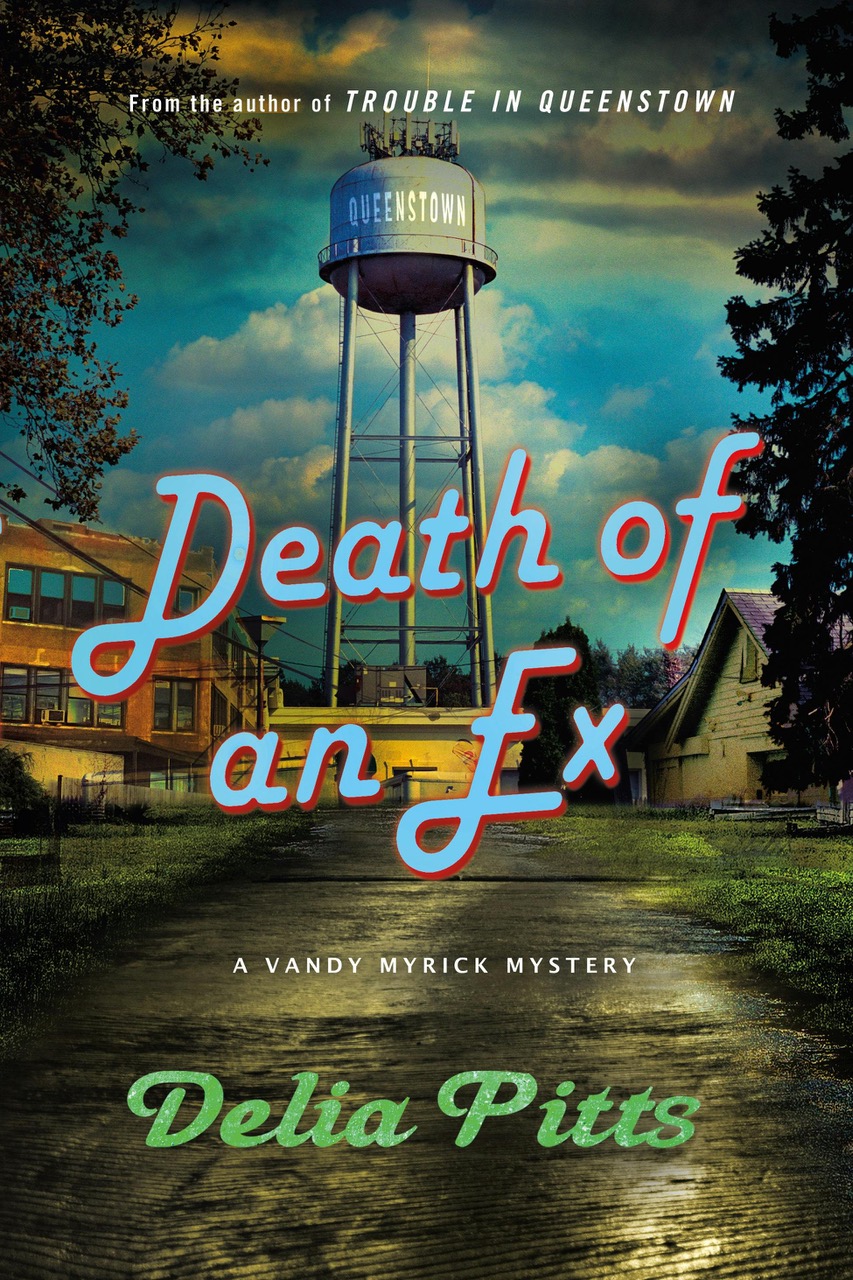 What drew you to the private detective novel and what makes Vandy different from other private detectives?
What drew you to the private detective novel and what makes Vandy different from other private detectives?
The private detective attracts me because it compellingly speaks to the role of the individual in society--the power and the responsibility to stand for the values of a community but also to stand against the community when necessary. I like the flexibility that the private eye gives us. They straddle both sides of the legal line of law enforcement, dancing from one side to the other, exercising judgment, morality. Vandy knows quite well what police procedural is, but her responsibility is individually to her client and more broadly to the community. She knows sometimes those responsibilities are conflict with the law.
I made a conscious effort to make Vandy grow from the tropes of the detective novel but to move against them. Most of those PIs are loners, but I wanted to build a circle of community for her with people who support her. Vandy's reliance on those friends she grew up with, went to college with, is very important. This set of strong women friends translates to mentoring teenager Ingrid Ramírez. While she does have an eye for the gentlemen, she doesn't drink nor carry a gun--both promises she made to her daughter. A gun also is an invitation to violence.
How does your background influence your writing?
My time in the Foreign Service expanded my capacity to write on deadline. I was often the junior member of the team so it was my responsibility to write the proceedings of the conference, and to do that quickly and with great accuracy. That means I learned to listen carefully, to hear what was being said, but also what was intended, the subtle tones being taken by the participants. That is essential to being a good writer and a good fiction writer. I learned how rhetoric plays into the presentation and how language can be used in a variety of ways and settings. I think all writing is persuasive, to move the ideas I have in my head into the head of the reader, to persuade them of the message's depth.
Naturally, the fiction message is quite different. I wasn't writing fiction when I wrote a report on the education system of Mexico to be sent to Washington. But I was still trying to persuade the decision makers of the truths I had uncovered. I wrote many speeches for ambassadors and that means pressure and voice. Voice is very important for characters. In speeches I was writing in the voice of the ambassador, not my own voice. It's very important to translate the vocabulary, background and concerns of the ambassador into their voice. I had to step into the voice of another person. That's an important skill in fiction. --Oline H. Cogdill, freelance reviewer
Book Candy
Book Candy
Starting in October, the Bodleian libraries at the University of Oxford will feature the exhibition John le Carré: Tradecraft, the Guardian reported.
---
"J.R.R. Tolkien reads from The Hobbit, The Lord of the Rings, & other works." (via Open Culture)
---
The Public Domain Review shared "W.E.B. Du Bois's hand-drawn infographics of African-American life (1900)."
Rediscover
Rediscover: Martin Cruz Smith
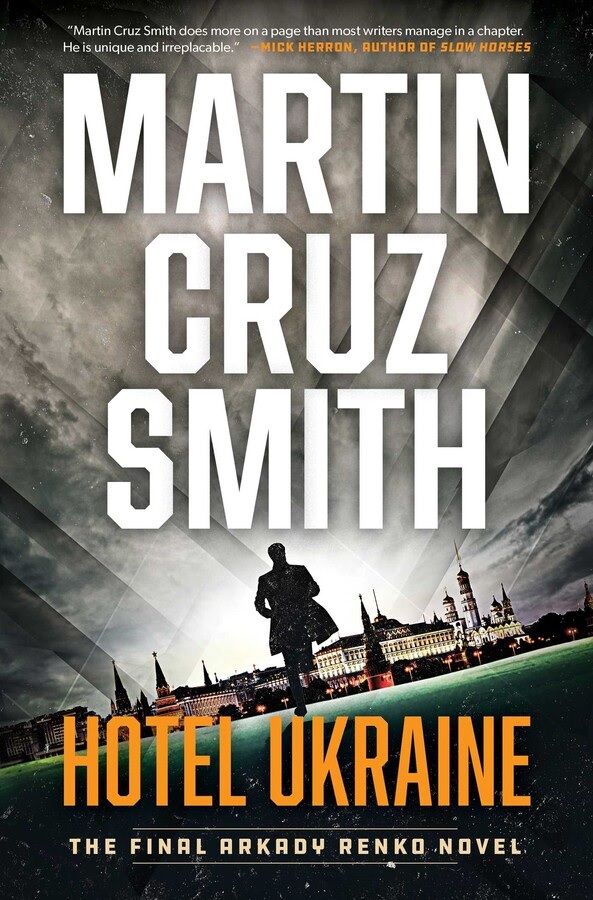 Martin Cruz Smith, best known for the Arkady Renko series that started with Gorky Park, died on Saturday at age 82. As noted by his publisher Simon & Schuster, the New York Times called Smith "the master of the international thriller," the New Yorker wrote that he was "brilliant," and the Washington Post called the series "a work of art."
Martin Cruz Smith, best known for the Arkady Renko series that started with Gorky Park, died on Saturday at age 82. As noted by his publisher Simon & Schuster, the New York Times called Smith "the master of the international thriller," the New Yorker wrote that he was "brilliant," and the Washington Post called the series "a work of art."
Smith's children--including Luisa Smith, editor-in-chief of Mysterious Press and Scarlet and former head buyer at Book Passage in Corte Madera and San Francisco, Calif.--made an announcement about their father's death, writing in part, "Our dad died peacefully late Friday night. We sat next to him, telling him how much we loved him, and in the last moments he let us know he heard us and loved us too. We already knew, in everything he had done in life he had let us know, but after Parkinson's had taken his voice, it felt like both a small miracle and a typical show of his ability to defy the odds that he could find a way to once again show his love.
"The world knew him best through Arkady Renko, the disillusioned Soviet investigator with a moral compass stubborn enough to function even in a blizzard of lies. First introduced in Gorky Park, Renko was not so much a hero as a survivor. Like dad, he mistrusted institutions, prized observation, used humor to expose hypocrisy, and believed that truth, though often buried, still mattered."
Early in his writing career, Smith wrote two westerns under the name Jake Logan; three Nick Carter spy novels; six Inquisitor series novels using the name Simon Quinn, about a spy agent employed by the Vatican; and a science fiction novel, The Indians Won, a Native American speculative novel. Several of his novels featured Roman Grey, a gypsy art dealer in New York City, and one, Canto for a Gypsy, was nominated for an Edgar. Nightwing, a 1977 thriller with a Native American setting, was adapted into a movie directed by Arthur Hiller.
As his children wrote, "Before Gorky Park, there were westerns and pulp thrillers, written under various pseudonyms, a cloak of anonymity that let him hone his craft without the burden of expectation. But once Renko entered the scene, everything changed. Gorky Park was both a commercial and critical success: a crime novel that slipped through the Iron Curtain and returned with secrets. A single book that changed our lives, moving us from New York to California, and allowing him to take greater chances with his writing."
Gorky Park was published in 1981 and was an immediate bestseller, staying on the lists for many months. It won a Gold Dagger from the Crime Writers' Association and was made into a 1983 movie directed by Michael Apted and starring William Hurt and Lee Marvin.
The first three Renko books were set during the Soviet period, and lauded for their portrayal of life in that era from the viewpoint of a police investigator who understands the limitations of his position but nonetheless investigates and follows all leads, regardless of vast political sensitivities. The eight following books loosely followed events in Russia, including the rise of Vladimir Putin and the invasion of Ukraine.
"What followed were a dozen more novels that never bowed to convention," his children added. "His sentences were sparse but musical. He distrusted glamour, preferred questions over answers, and could describe a man's character through a single gesture, the way a cigarette burned, the way a lie paused."
After the publication of Gorky Park, Smith also wrote several novels distinct from the Renko books, including Stallion Gate, Rose, December 6, and The Girl from Venice.
Cruz received the Mystery Writers of America's Grand Master Award, as well as two Hammett Prizes, for Rose and Havana Bay, from the International Association of Crime Writers, North American Branch.
Hotel Ukraine, the 11th and "final Arkady Renko novel," was published last Tuesday by Simon & Schuster, which noted: "For the last three decades, Smith lived with Parkinson's, and he innovatively incorporated the condition into the more recent Renko novels, with his protagonist facing it as courageously as the author himself. As Smith writes of Renko in Hotel Ukraine: 'He could stay at home, do nothing, and surrender as his symptoms got worse... He was defined by who he was and what he could still do. Put that way, it wasn't even a choice.' "
"The same was true of Martin Cruz Smith," Sean Manning, v-p and publisher of S&S and Smith's editor, observed. "He was a writer, and he did it beautifully and valiantly until the very end."
| Advertisement susan wiggs signed copy giveaway! |
|
Read what writers are saying about their upcoming titles
Flannery O'Connor:
|
Pub Date: ISBN: Type of Book: Age Range: List Price: |


